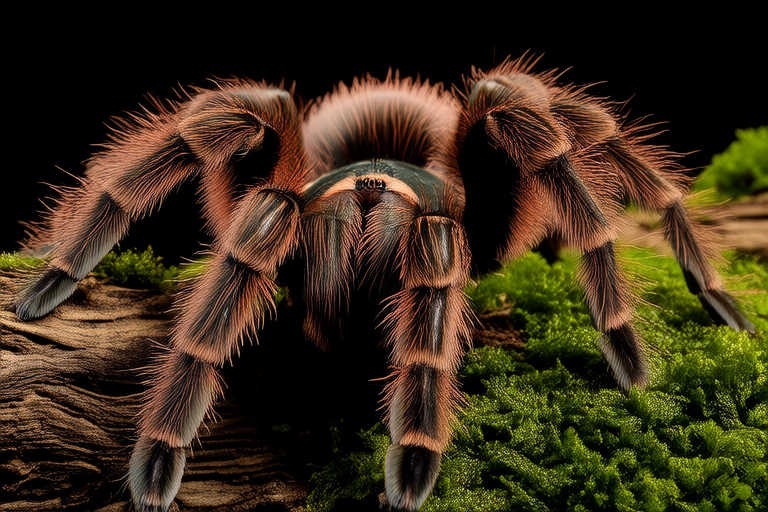Tarantulas as Pets: The Ultimate Guide for Beginners
Welcome to the fascinating world of tarantulas! If you’re considering adding one of these unique creatures to your home, you’ve come to the right place. This comprehensive guide will walk you through everything you need to know about keeping tarantulas as pets, from choosing the right species to ensuring their health and happiness.
Introduction to Tarantulas as Pets
Tarantulas make excellent pets for those who appreciate quiet, low-maintenance companions. These spiders are generally docile and can live for many years, providing long-term enjoyment for their owners. While they may seem intimidating at first glance, with proper care and respect, tarantulas can be rewarding pets that offer a unique connection to nature.
Care Requirements
Before bringing a tarantula into your home, it’s essential to understand its specific care needs. Tarantulas require a controlled environment that mimics their natural habitat. They thrive in warm, humid conditions, so maintaining the correct temperature and humidity levels is crucial.
Temperature and Humidity
Most tarantulas prefer temperatures between 75°F and 85°F (24°C to 29°C). A thermometer placed inside the enclosure will help monitor these levels. For humidity, most species do well with 60% to 80%. A hygrometer can measure this accurately. Adjusting the substrate moisture or using a spray bottle can help maintain the desired humidity.
Feeding
Tarantulas are carnivorous and feed on live insects such as crickets, mealworms, and dubia roaches. Juvenile tarantulas eat smaller prey, while adults can handle larger items. It’s important to gut-load feeder insects with nutritious food before offering them to your tarantula. Feeding once or twice a week is usually sufficient, depending on the size and age of the spider.
Water
Providing a shallow water dish is essential. Tarantulas drink by lapping water off surfaces, so ensure the dish is shallow enough to prevent drowning. Replace the water regularly to keep it fresh.
Suitable Housing
The right enclosure is crucial for a tarantula’s well-being. Glass terrariums or plastic containers with secure lids work well. The enclosure should be at least three times the leg span of the tarantula in height and width, and twice the leg span in depth. Ensure there are no gaps or holes where the tarantula could escape.
Substrate
Using a substrate that holds moisture without becoming soggy is ideal. Coconut fiber, peat moss, or a mix of vermiculite and sphagnum moss are popular choices. A layer of at least two inches is recommended to allow burrowing behavior.
Hiding Spots
Tarantulas are nocturnal and benefit from having hiding spots. Half logs, cork bark, or commercially available hide boxes provide safe spaces for resting during the day.
Diet Specifics
Feeding tarantulas involves more than just providing live insects. Gut-loading the prey items with nutrient-rich foods ensures your tarantula gets all necessary vitamins and minerals. Dusting the feeder insects with calcium powder can also be beneficial, especially for females preparing to molt or breed.
Handling Tips
While tarantulas are generally docile, handling them should be done carefully. Always support the body with both hands and avoid squeezing. Allow the tarantula to walk onto your hand rather than picking it up. Some species are more tolerant of handling than others, so research your particular tarantula’s temperament.
Common Health Issues
Like any pet, tarantulas can face health challenges. Common issues include dehydration, mites, and improper shedding. Regularly checking for signs of distress, such as lethargy or refusal to eat, can help catch problems early. Consult a veterinarian specializing in exotic animals if you suspect your tarantula is ill.
Choosing the Right Species for a First-Time Owner
Selecting the right tarantula for beginners is key to successful pet ownership. Consider species known for their calm demeanor and ease of care. Some popular choices include the Chilean Rose Hair, Mexican Redknee, and Curlyhair tarantulas. Avoid species requiring complex care or specialized diets until you gain more experience.
Maintaining Your Tarantula’s Well-being
To ensure your tarantula thrives, establish a routine for feeding, cleaning, and monitoring. Regularly check the enclosure for cleanliness and adjust environmental settings as needed. Pay attention to your tarantula’s behavior; sudden changes might indicate stress or illness.
By following these guidelines, you’ll create a nurturing environment for your tarantula. Remember, each tarantula is unique, so adapt your care practices based on individual needs and preferences.
Ownership of tarantulas comes with significant responsibility, but it also offers a deep appreciation for these remarkable creatures. With patience, knowledge, and love, you and your tarantula can enjoy a fulfilling relationship built on mutual respect and care.
